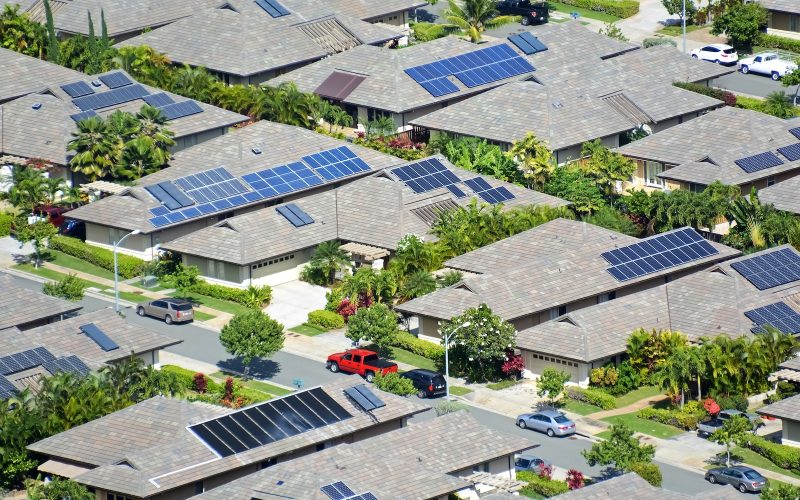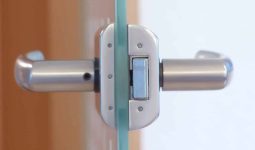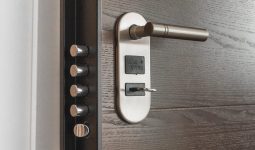Solar panels are an excellent source of renewable energy and have the potential to power your tiny house or RV.
That said, there are a few important considerations when installing them in your home, especially if you plan on selling them at some point down the road.
Therefore, if you’re considering this option, keep reading to learn about solar panels for tiny houses!
What is a Solar Panel?
A solar panel is a device that converts light into electricity. It consists of many connected individual solar cells.
When sunlight hits a solar cell, it causes an electrical reaction, which generates power.
However, this power can then be used to run appliances or charge batteries. Solar panels are usually mounted on rooftops, open spaces, fields, or parking lots.
How Many Solar Panels Can Power a Tiny House?
The average U.S. home uses about 909 kWh of electricity per month or about 30 kWh daily.
A typical solar panel produces about 1 kWh per day, so you would need about 30 solar panels for tiny houses to power a typical home.
However, a tiny house uses far less electricity than a typical home, so it would need fewer solar panels to power it.
A tiny house using only 500 kWh of electricity per month would need only 17 solar panels. Of course, the size and shape of your tiny house will impact how many solar panels you need to produce enough energy for your needs.
Also, several other factors determine how many solar panels you’ll need. To make them worth the investment.
Solar Panels for Tiny Houses
Here is the list of solar panels for tiny houses
Goal Zero Sherpa 100 Solar Recharging Kit with Nomad 20 Solar Panel
A solar panel is a great way to power a tiny house. The Goal Zero Sherpa 100 Solar Recharging Kit with Nomad 20 Solar Panel is a great option.
This kit includes a Nomad 20 solar panel, a Sherpa 100AC portable power pack, and a roll-up solar panel case. However, the Sherpa 100AC can charge laptops, phones, and other small devices.
At the same time, the Nomad 20 solar panel can recharge the power pack in about 4-8 hours. The roll-up case makes it easy to transport the solar panel and keeps it protected from the elements.
Grape Solar 100-Watt Off-Grid Solar Panel Kit
The Grape Solar 100-Watt Off-Grid Solar Panel Kit is ideal for various applications. Including RVs, boats, 12-volt battery charging, small pumps, and LED lights.
The kit’s easy-to-use design includes two 100-watt solar panels, a 20A charge controller, mounting hardware, and cables.
Moreover, the compact size of the Grape Solar 100-Watt Off-Grid Solar Panel Kit makes it perfect for installations where space is limited.
However, the Grape Solar 100-Watt Off-Grid Solar Panel Kit is an excellent choice for those who want to use solar power but don’t have a lot of space to work with. The kit includes everything you need to start, and its compact size makes it easy to install.
EcoFlow 110-Watt Foldable Solar Panel
If you’re looking for solar panels for tiny houses to power your home. The EcoFlow 110-Watt Foldable Solar Panel is a great option. This panel is highly efficient, meaning you’ll get more power out of it than other panels on the market.
It’s also lightweight and portable, making it easy to take with you on the go. Plus, it’s durable and weather-resistant, so you don’t have to worry about it breaking down in rough conditions.
Tiny House 660W Off Grid Solar Power System
A 660-watt off-grid solar power system is a great way to get started generating electricity. Solar panels for tiny houses are a clean and renewable source of energy, and they can help you save money on your electric bill.
However, this system includes six 110-watt solar panels and one 40-amp charge controller. The solar panels for tiny houses are mounted on the roof of the tiny house. The charge controller is mounted on the wall.
The system also includes a 100-watt inverter, two 12-volt deep cycle batteries, and a battery box. It will provide enough power to run lights, a small refrigerator, and a TV.
Lodge 6.8 kW 24 Panel SolarWorld Off Grid Solar System
The first step is to gather the equipment you will need. You will need solar panels, an inverter, batteries, and a charge controller.
Next, you will need to install solar panels on your roof. After that, you must connect the inverter to the batteries and the solar panels. Finally, you must connect the charge controller to the batteries and the solar panels.
Tiny House 1320W Lithium Battery Option
We all know that going solar is a great way to save money and help the environment. But what if you could take it a step further by powering your home with solar panels? That’s where the tiny house comes in!
However, there is a recent trend in sustainable living. These homes are usually less than 400 square feet and can be powered entirely by solar panels for tiny houses.
Because they’re so small, they’re much easier and cheaper to build than a traditional home. So, if you want to go green and save money, a tiny house might be the perfect option!
Tiny House 1320W Lithium Battery solar panel
A solar panel is a great way to power your tiny house and be more environmentally friendly. This guide will help you choose the right solar panels for tiny houses.
First, you need to decide what type of solar panel you want. There are three types: monocrystalline, polycrystalline, and thin film. Monocrystalline panels are the most efficient but also the most expensive.
Moreover, Polycrystalline panels are less efficient but cheaper. Thin-film panels are the least efficient but also the least expensive.
Second, you need to decide how much power you need. The average tiny house uses about 400 watts of power per day.
Grape Solar 5830 Watt Grid-Tied Solar Kit
Now that you’ve decided to go solar, you’re probably wondering how to start. The first step is to purchase a solar panel kit. We recommend the Grape Solar 5830 Watt Grid-Tied Solar Kit.
Nevertheless, this kit includes everything you need to start, including the panels, inverter, and mounting hardware.
It comes with the inverter; you must ensure enough roof space. Or wherever else you plan on putting them for the solar panels to be placed.
Also, if any structural changes are needed to mount them properly, your installation will require an electrician and a licensed contractor.
Lastly, ensure you don’t place them too close or far apart, as this can cause performance issues due to shading or shadows.
Grape Solar 3750 Watt Expandable Solar Kit
These expandable solar kits from Grape Solar are an easy and efficient way to start using solar power for your tiny house.
However, With a 3750-watt panel, this kit is powerful enough to charge a 12-volt battery bank. Providing enough power to run small appliances and lights.
Moreover, the expandable design means you can add more panels in the future if necessary, making this a great option for those who want to start small and expand as their needs grow.
Tiny House 1980w AGM Battery solar panel
A solar panel is a device that converts light into electricity. Solar panels power everything from small electronic devices to entire homes. The size of a solar panel determines how much power it can generate.
Nevertheless, most solar panels are made from silicon, an abundant material on Earth. Solar panels for tiny houses have no moving parts and are durable, making them ideal for a tiny house.
Solar panels can generate both AC and DC power. They are an environmentally friendly way to generate electricity.
Grape Solar 400-Watt Off Grid Solar Panel Kit
This Grape Solar 400-Watt Off-Grid Solar Panel Kit is ideal for various applications, including RVs, boats, 12-volt battery charging, small pumps, and charging small electronic devices.
The kit includes four 100-watt solar panels, a 30-amp charge controller, mounting hardware, and cables. With this solar panel kit, you can produce up to 400 watts of power.
Where Should You Mount Your Solar Panels?
If you’re considering solar panels for tiny houses, you’re probably wondering where to put them. The answer depends on several factors, including your climate and the orientation of your house.
However, mounting your solar panels on the roof is an option that works well if you have an unshaded roof with no obstructions, such as chimneys or skylights, that would shade them during any part of the day.
But if your roof is shaded during the day or has many obstructions, let enough sunlight through. Mounting them on ground level might be a better option. You can also mount them vertically next to one side of your house with clear exposure.
In this case, they’ll work best if they face south (in North America) because this lets them capture most of the sun’s energy over 12 hours daily. And that’s more than any other orientation will get in such a short period.
Is It Right For You?
There are many factors to consider when deciding if solar panels for tiny houses are right for you.
First, you need to consider your power needs and the amount of sunlight your location gets. Then, you need to factor in the initial investment and maintenance costs.
However, solar panels can be a great way to reduce your carbon footprint. And live a more sustainable lifestyle, but they’re not right for everyone. Weigh your options before deciding what’s best for you and your home.
What Are The Components Of a Full System?
A full system includes solar panels, an inverter, batteries, and a charge controller. Solar panels are the main component and generate electricity from sunlight. The inverter changes the DC electricity from the solar panel into AC electricity that your appliances can use.
Furthermore, batteries store excess electricity generated by the solar panels for tiny houses to be used at night or during a power outage. The charge controller regulates the flow of electricity from the solar panel to the batteries to prevent overcharging.
However, the battery bank usually consists of 12-volt deep-cycle lead-acid batteries wired in series to increase voltage. Typical battery banks range from 8 kWh to 10 kWh for small systems, with more complex systems using larger battery banks.
Advantages of Solar Panels
Solar panels for tiny houses have many advantages when it comes to powering the tiny house. They are renewable, meaning they won’t run out like fossil fuels.
Solar panels are also environmentally friendly, producing no emissions or pollution. They are very efficient, converting more than 80% of the sunlight they receive into electricity.
Additionally, solar panels have a long lifespan and require little maintenance. Finally, solar panels for tiny houses can increase the value of your home.
Conclusion
Solar panels are a great way to power a tiny house. They are environmentally friendly, provide free energy, and are easy to install.
There are also a few things to consider before installing solar panels, such as the size of your house and the sunlight it receives. But overall, solar panels for tiny houses are a great option for powering a tiny house.








